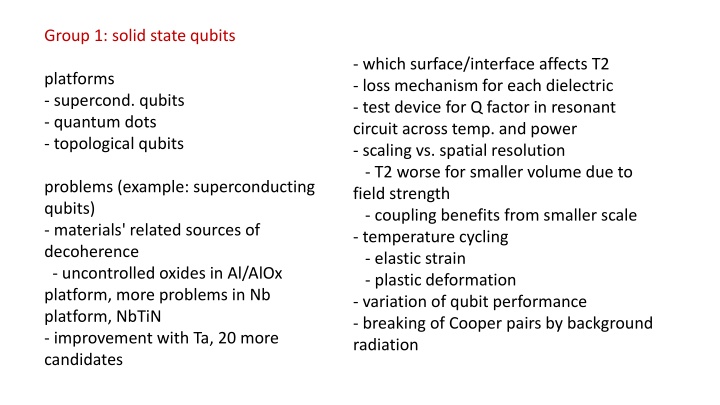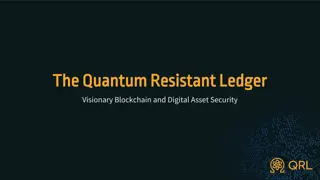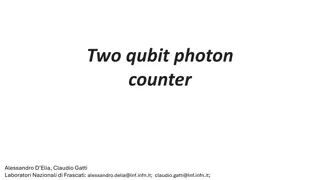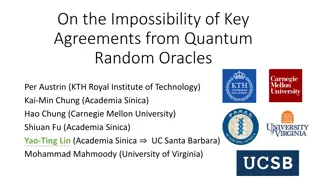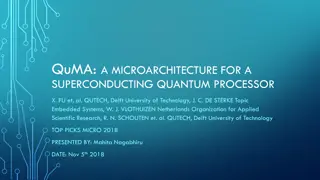Quantum Technologies Infrastructure Discussion
Group discussions on infrastructure needs for solid-state qubits, defects, optics, and quantum materials, emphasizing collaboration, access modes, and multinational sources to address industry interest and alignment with research programs.
Download Presentation

Please find below an Image/Link to download the presentation.
The content on the website is provided AS IS for your information and personal use only. It may not be sold, licensed, or shared on other websites without obtaining consent from the author.If you encounter any issues during the download, it is possible that the publisher has removed the file from their server.
You are allowed to download the files provided on this website for personal or commercial use, subject to the condition that they are used lawfully. All files are the property of their respective owners.
The content on the website is provided AS IS for your information and personal use only. It may not be sold, licensed, or shared on other websites without obtaining consent from the author.
E N D
Presentation Transcript
Group 1: solid state qubits - which surface/interface affects T2 - loss mechanism for each dielectric - test device for Q factor in resonant circuit across temp. and power - scaling vs. spatial resolution - T2 worse for smaller volume due to field strength - coupling benefits from smaller scale - temperature cycling - elastic strain - plastic deformation - variation of qubit performance - breaking of Cooper pairs by background radiation platforms - supercond. qubits - quantum dots - topological qubits problems (example: superconducting qubits) - materials' related sources of decoherence - uncontrolled oxides in Al/AlOx platform, more problems in Nb platform, NbTiN - improvement with Ta, 20 more candidates
solutions - spectroscopy on various length scales down to 10 nm - concentration gradients - in operando (but not at mK temperatures) - strain analysis - epitaxy (implicit/explicit) - spacial maps of charge noise versus x-ray imaging - identification of defects - impact of cleaner environment - hard superconducting gap and proximity by ARPES
Group 2: defects Problem 1) structure around defects 2) local strain field around dopants and in average 3) reason for active/inactive dopant 4) structure and electronic states down to 3 nm from surface 5) check homogenity of large number of dopants Needs 1) access to irradation facilities 2) expertise in irradiation 3) expertise in broad characterization tools - THz to x-rays, also multimodal Benefits - contribution to rendering solutions scaleable - reliable production persepective triggers industry interest
Group 3: Optics, quantum materials - better exploitation of quantum nature of photons - entanglement - downconversion - single photon generation - wave mixing methods - better exploitation of pure states of spin and orbital momentum - cleaner states and their manipulation - characterization and improvement of materials - cleaner surfaces - larger coherence times
Points discussed access mode - beyond "beamtime", users -> collaborators - align in-house research programs - request for extra infrastructure QT platforms are different - in infrastructure needs - which extra infrastructure is needed? - in TRL levels - from basic research to startups guidance - priorization required before call - address infrastructure needs (location, financing) - multinational sources (conditions for access)
Action: "Target driven research 2024: topical call across LEAPS facilities call step 1: express interest LEAPS + contact persons - check infrastructure needs - infrastructure available at LEAPS facilities? No development of infrastructure Yes 5 months selection and beamtime assessment of process distinguish platforms 1 contact person per platform from community + 1 from facility creates working group in community - name urgent problems to be addressed 6 months Meeting LEAPS + contact persons + funding agent - integrity check - select urgent problems to be addressed
